Flashcards for NEET Biology are designed to boost your NEET preparation. Find below flashcards for Breathing and Exchange of Gases. These flashcards on Breathing and Exchange of Gases are prepared as per the NEET syllabus. This is helpful for aspirants of NEET and other exams during last-minute revision. Flashcards For NEET Biology – Breathing and Exchange of Gases, covers all the important points that are frequently asked in the exam. Check BYJU’S for the full set of Flashcards and Study material for NEET Biology. Solve NEET Biology MCQs to check your understanding and outperform in the exam.
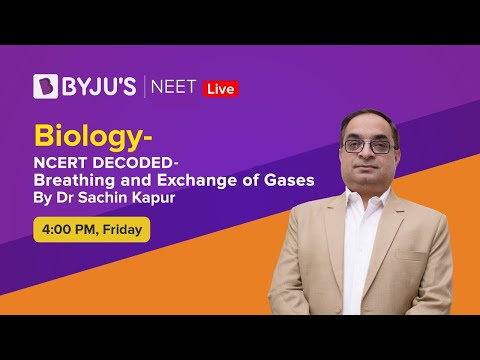
Download PDF of NEET Biology Flashcards for Breathing and Exchange of Gases
| Inspiration | Diaphragm contracted, ribs and sternum raised
Increase in thoracic and pulmonary volume resulting in a decrease in intrapulmonary pressure |
| Expiration | Diaphragm relaxed and arched upwards, ribs and sternum returned to the original position
The decrease in thoracic and pulmonary volume resulting in an increase in intrapulmonary pressure |
| Tidal volume | The volume of air inspired or expired normally
500 ml |
| Inspiratory reserve volume (IRV) | Additional air inspired by a forcible inspiration
2500-3000 ml Inspiratory capacity (IC) = TV+IRV |
| Expiratory reserve volume (ERV) | Additional air expired by a forcible expiration,1000 -1100 ml
Expiratory capacity (EC) = TV+ERV |
| Residual volume (RV) | Air remaining in the lungs after forcible expiration,1100 – 1200 ml
Functional residual capacity = ERV+RV |
| Vital capacity (VC) | The maximum volume of air that can be inspired or expired = ERV+TV+IRV
Total lung capacity = VC+RV |
| Oxygen transport | Formation of oxyhaemoglobin in alveoli – high pO2, low pCO2, H+ and temp
Dissociation of oxyhaemoglobin in tissues – low pO2, high pCO2, H+ and temp |
| Carbon dioxide transport | Carbamino-haemoglobin – 20-25%
Bicarbonate – 70% Dissolved in plasma – 7% |
| Neural regulation of respiration | Rhythm centre – medulla region
Pneumotaxic centre – pons region |
| Chemical control of respiration | Chemosensitive area in medulla oblongata – sensitive to CO2 and H+ conc.
Receptors in the aortic arch and carotid artery – sense changes in CO2 and H+ conc. |
| Emphysema | Due to damage in alveolar walls |
| Alveoli | Thin squamous epithelium of pneumocyte cells
Type I – smaller and help in gaseous exchange Type II – larger and secrete lecithin, which acts as a surfactant and decreases surface tension |
| Diffusion membrane | Alveolar thin squamous epithelium
Middle basement membrane Endothelium of blood capillaries |
Get access to the full set of flashcards for NEET Biology, only at BYJU’S.
Also Check:
NEET Flashcards: Body Fluids And Circulation
NEET Flashcards: Excretory Products And Their Elimination
NEET Flashcards: Locomotion And Movement
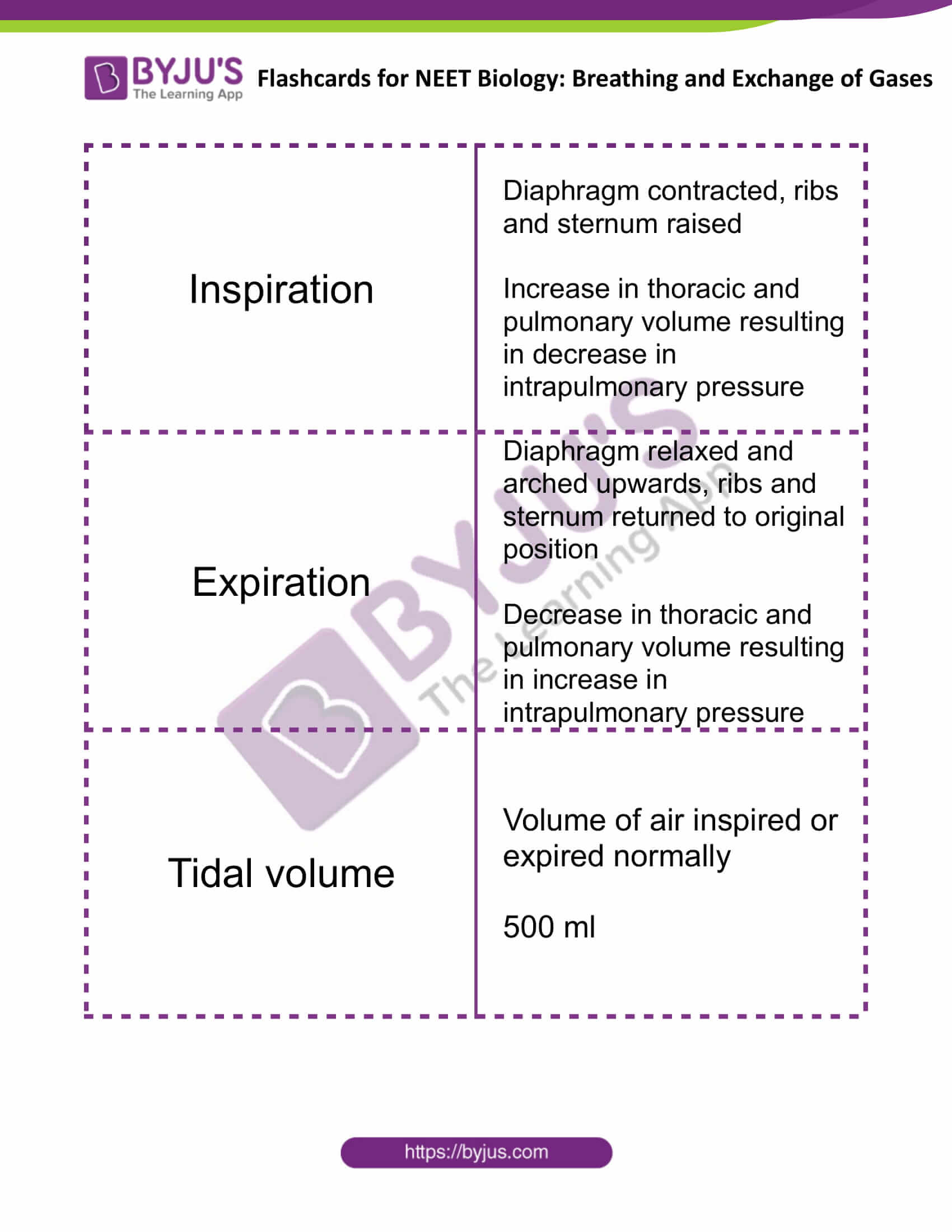
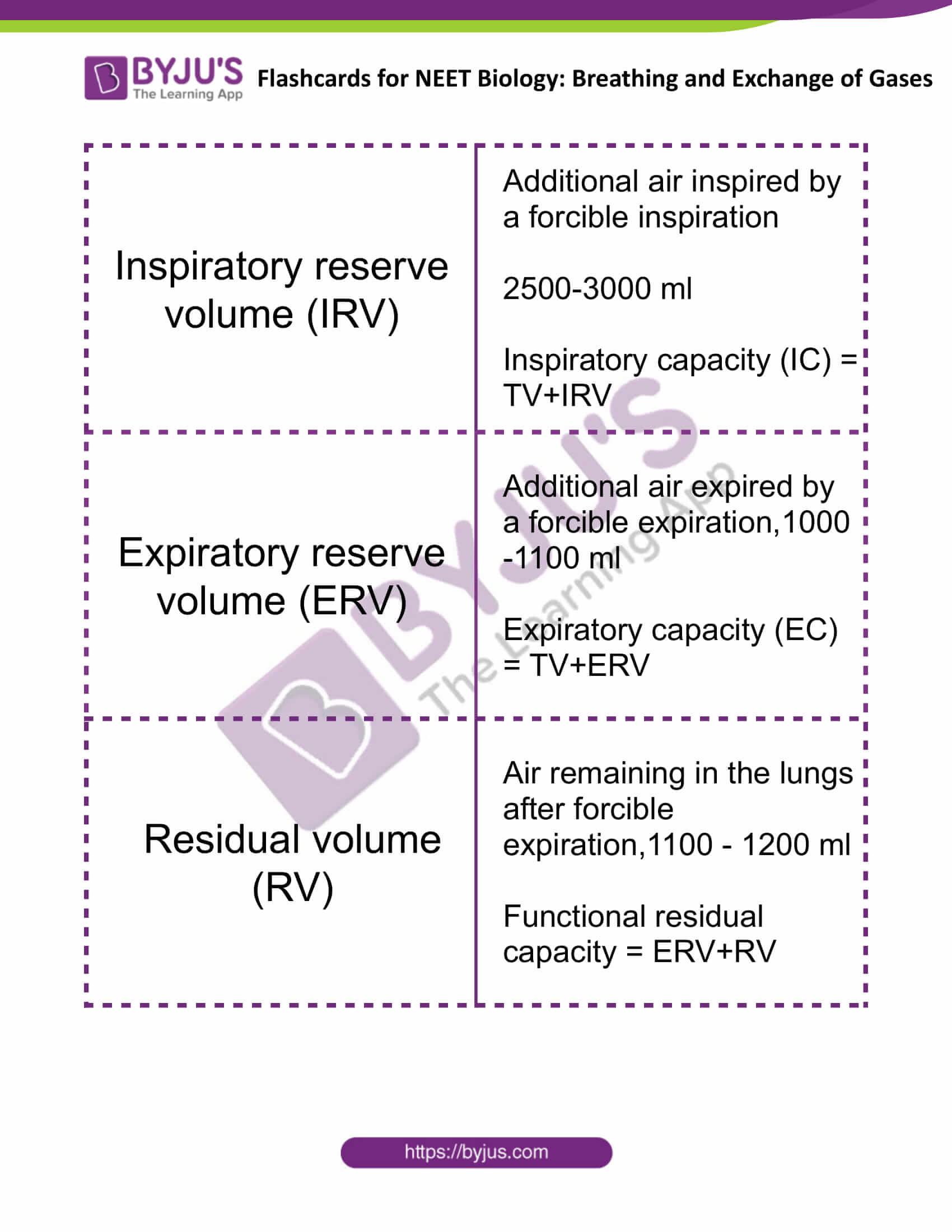
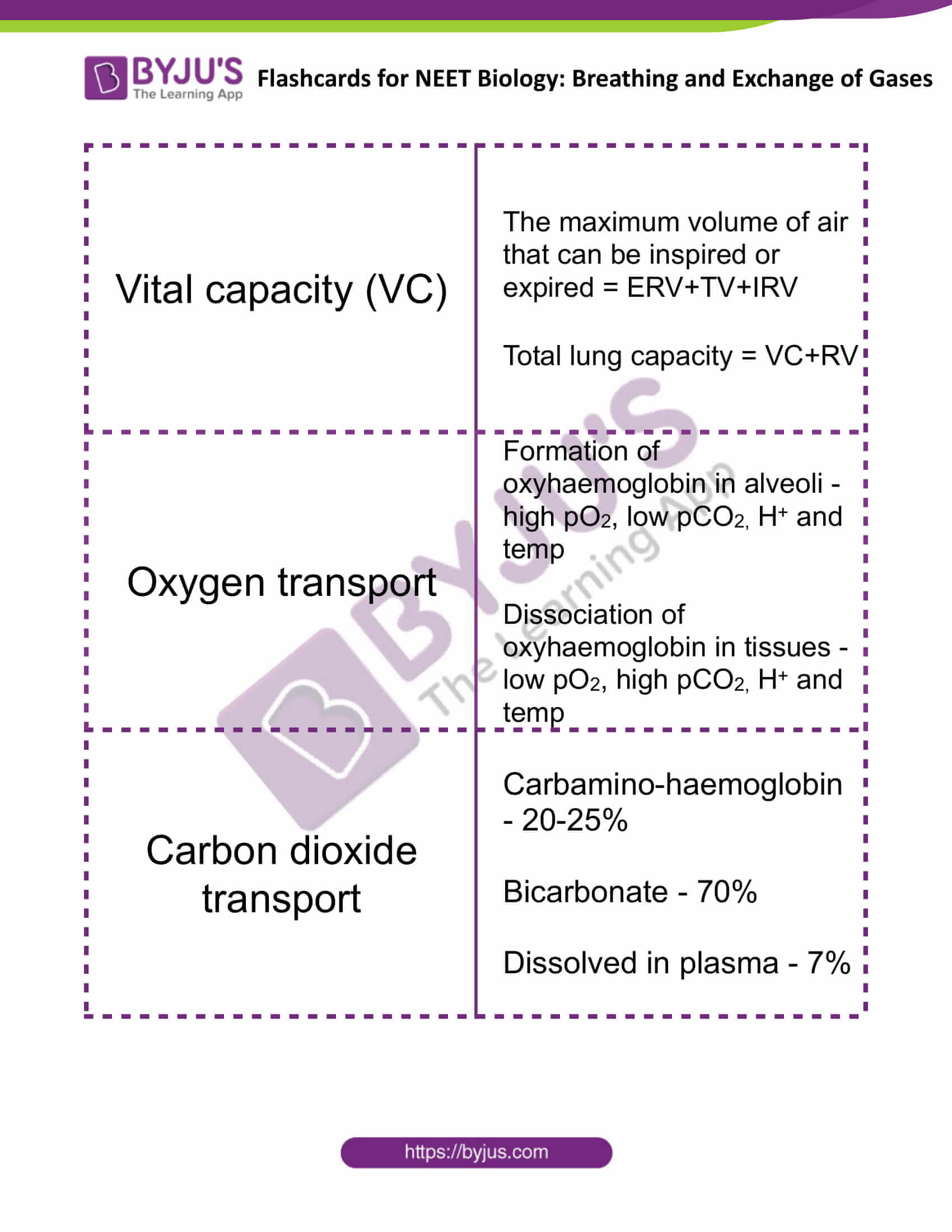
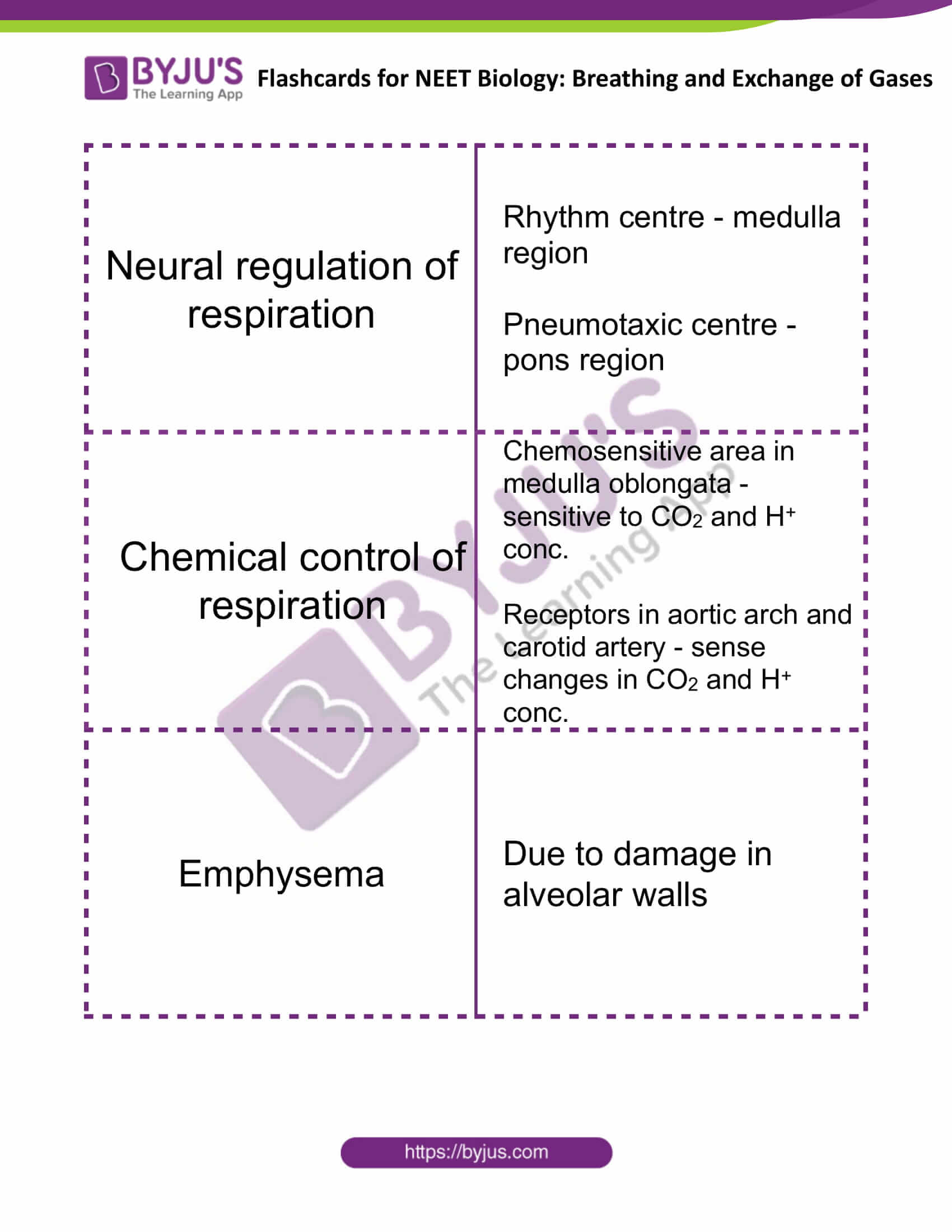
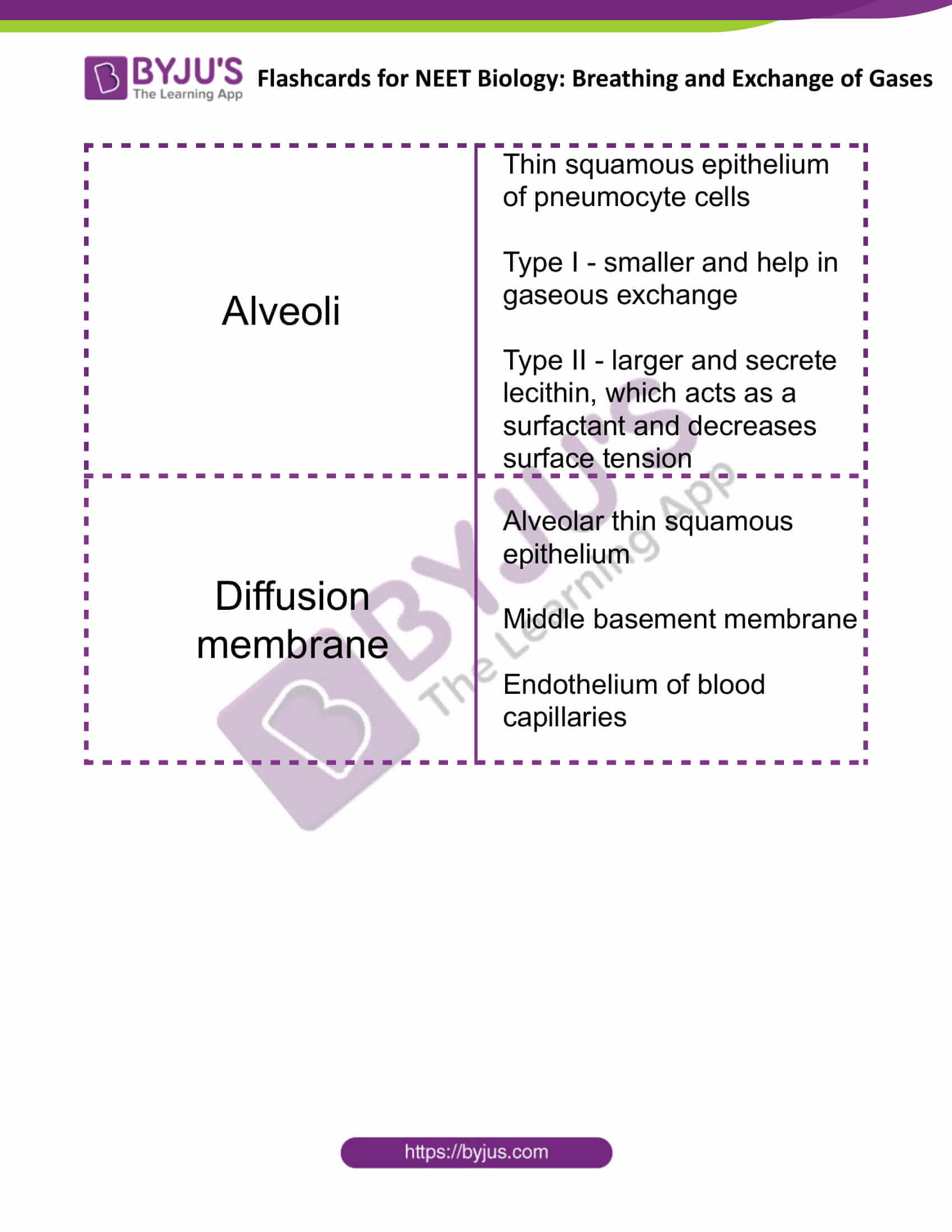
Comments